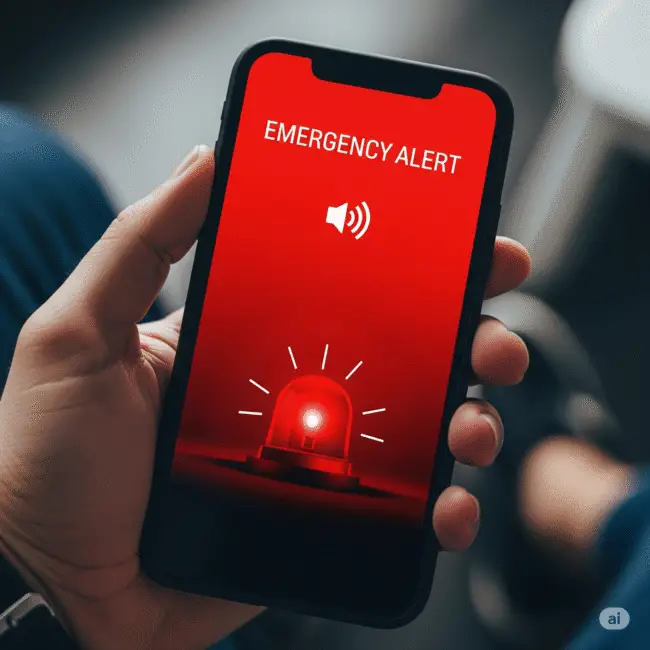1 | Why another alert?
The Cabinet Office is running a fresh nationwide drill of the Emergency Alerts System to be sure it can warn the public about life‑threatening events such as severe flooding, wildfires or hostile‑state threats. Officials stress the test is only a rehearsal and urge the public “don’t panic” when phones go off simultaneously.
The scheme was first rolled out in 2023 and—following recommendations from the Covid inquiry—has moved to a two‑year testing cycle, making the 2025 drill the last full test until 2027.
2 | When will the siren sound?
- Date window: “Later this year” (exact day still TBC).
- Time of day: The Cabinet Office normally chooses early‑evening slots so most people are awake but not driving at rush hour.
- Once the date is fixed, it will be publicised on GOV.UK and major broadcasters several weeks in advance.
3 | How the alert works
| Feature | What happens |
|---|---|
| Siren & vibration | Your handset will emit a distinctive, high‑pitched 10‑second tone and vibrate repeatedly. |
| Full‑screen message | A warning banner with “UK Government: Emergency Alert TEST” appears; you must tap OK to regain normal phone use. |
| Networks used | Broadcast over 4G and 5G cell towers; no personal data is collected or stored. |
| Reach | About 90 % of UK mobiles will receive it, covering England, Wales, Scotland and Northern Ireland. |
4 | Will my phone get it?
- iPhone: iOS 14.5 or later.
- Android: Version 11 or later.
- Phones locked to 2G/3G only, switched off, in flight‑mode, or with Emergency Alerts disabled will not receive the tone.
- If you use specialist accessibility settings (e.g. hearing‑aid compatibility) the alert respects them, but the sound may still be loud.
5 | Why is the drill important?
The government cites recent extreme‑weather events and civil‑contingency reviews: a rapid, location‑based broadcast is faster than SMS and doesn’t rely on downloaded apps. Tests also help emergency planners fine‑tune cell‑tower targeting and identify handset models that fail to alert.
6 | Do I have to do anything?
- Acknowledge — Tap OK once you’ve read the test message.
- Don’t call 999 — Lines must stay clear for real emergencies.
- Driving? — Keep both hands on the wheel; pull over safely before dismissing the alert. The Cabinet Office has asked motorists not to reach for phones mid‑journey.
- Opt‑out option — You can toggle Settings > Notifications > Emergency Alerts (iOS/Android) and switch off “Severe” & “Extreme.” However, officials “strongly advise” leaving them on for your safety.
7 | Looking ahead
With biennial tests locked in, the 2025 siren will be the last full‑scale rehearsal until 2027. Smaller, region‑specific pilots may still occur in areas prone to floods or wildfires. Keeping the feature enabled means you’ll be instantly warned if a genuine disaster is unfolding near you.
Bottom line: The 10‑second siren may be jarring, yet it’s a vital safety net designed to reach nearly every modern handset across the UK. Spread the word—especially to less tech‑savvy friends and family—and keep Emergency Alerts enabled.




